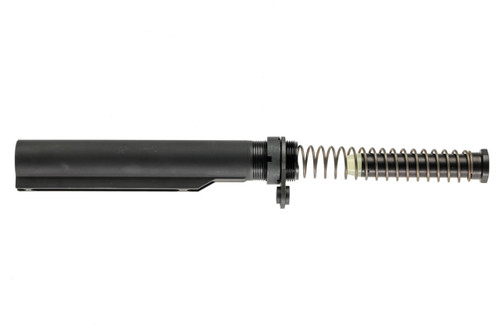About this BCM® MK2 Ambi AR-15 Charging Handle
- Medium latch extends past the main body approximately 0.92".
- Ambidextrous charging handle.
- Compatible with Mil-Spec AR-15 Direct Impingement Weapon Systems.
- Large MK2 Ambi AR-15 Charging Handle version also available.
- **NOT compatible with adjustable gas keyed bolt carrier groups.**
About BCM® Mk2 CHARGING HANDLES
IMMEDIATE ACTION
Driven by over a decade of feedback from real-world combat operations, BCM has made continual design refinements and structural improvements to the charging handle in the M4 and M16 to address the current manual of arms for the weapon system.
Optimizing the contours into a snag-free profile that facilitates immediate manipulation with an end user's reaction side grip. The range of BCM® AR-15 Charging Handles is available with both ambidextrous and MIL-SPEC controls.
MK2 RECEIVER OPTIMIZED
The U.S. patents pending BCM Mod 3 Charging Handle now features upper and lower and side exhaust channels to vent gas from the chamber away from the shooter during operation of the weapon. While these channels are optimized for the BCM MK2 Upper receiver, they still provide improved gas diversion on all Mil-Spec upper receivers.
LIFESAVING TOOLS
Redesigned to eliminate the load on the pivot pin and keep the energy from charging close to the centerline of the carbine/rifle, BCM Mk2 Charging Handles provides an uninterrupted engagement surface with no pinch points to catch skin or other material that could induce a malfunction during a time-is-life manipulation.
A patented ambidextrous design with simplified mechanism for robust performance, each ambidextrous AR-15 Charging Handle is crafted with MIL-SPEC grade forgings and machined from 7075 T6 aluminum, with a hard coat anodized finish per Mil-A-8625F, Type III, Class 2.
MADE IN AMERICA
All BCM components and accessories are made in the United States and unite state of the art manufacturing with lightweight and durable materials to ensure components that last a lifetime, performing far beyond performance requirements established nearly six decades ago.












